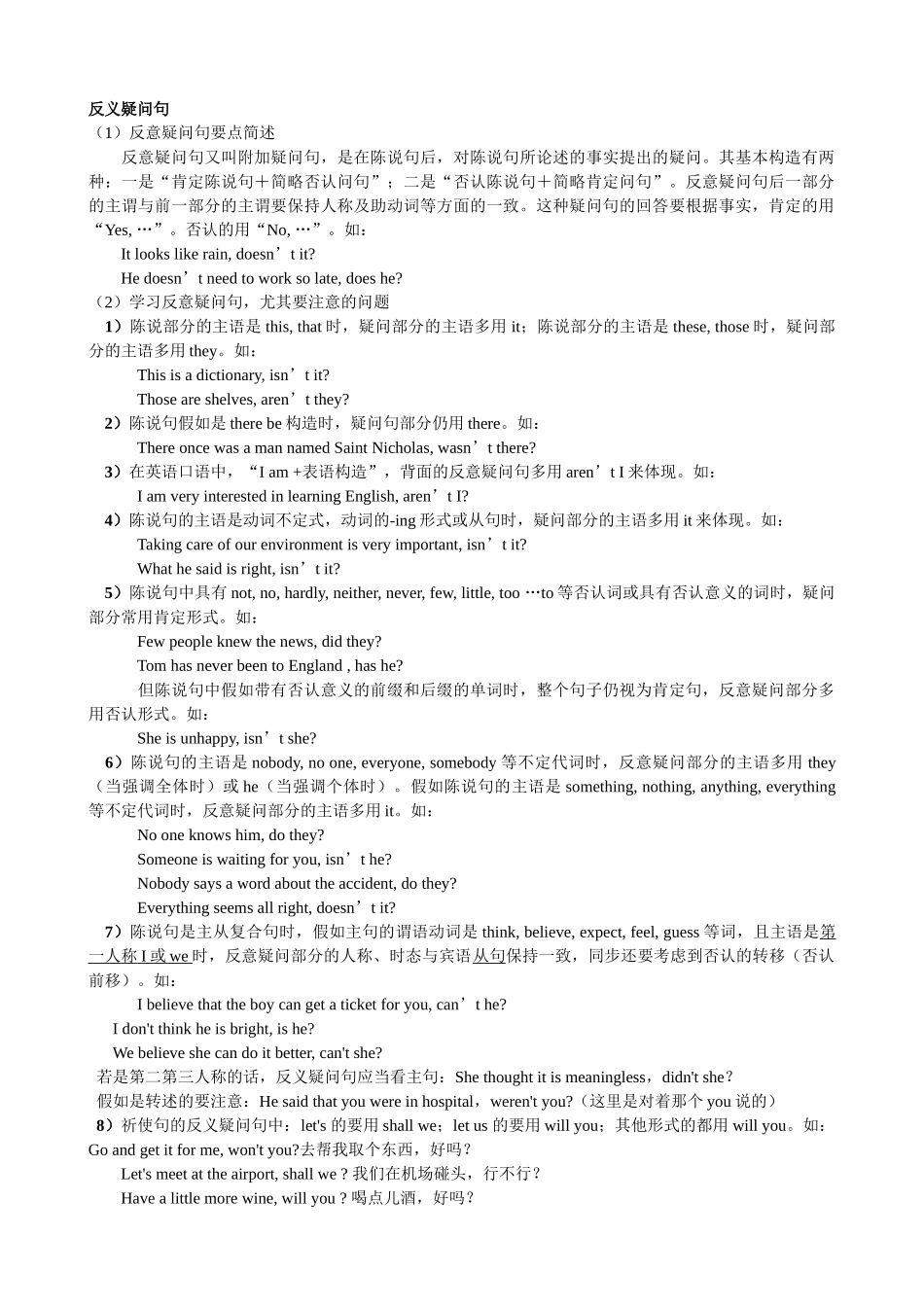反义疑问句(1)反意疑问句要点简述 反意疑问句又叫附加疑问句,是在陈说句后,对陈说句所论述的事实提出的疑问。其基本构造有两种:一是“肯定陈说句+简略否认问句”;二是“否认陈说句+简略肯定问句”。反意疑问句后一部分的主谓与前一部分的主谓要保持人称及助动词等方面的一致。这种疑问句的回答要根据事实,肯定的用“Yes, …”。否认的用“No, …”。如: It looks like rain, doesn’t it? He doesn’t need to work so late, does he?(2)学习反意疑问句,尤其要注意的问题 1)陈说部分的主语是 this, that 时,疑问部分的主语多用 it;陈说部分的主语是 these, those 时,疑问部分的主语多用 they。如: This is a dictionary, isn’t it? Those are shelves, aren’t they? 2)陈说句假如是 there be 构造时,疑问句部分仍用 there。如: There once was a man named Saint Nicholas, wasn’t there? 3)在英语口语中,“I am +表语构造”,背面的反意疑问句多用 aren’t I 来体现。如: I am very interested in learning English, aren’t I? 4)陈说句的主语是动词不定式,动词的-ing 形式或从句时,疑问部分的主语多用 it 来体现。如: Taking care of our environment is very important, isn’t it? What he said is right, isn’t it? 5)陈说句中具有 not, no, hardly, neither, never, few, little, too …to 等否认词或具有否认意义的词时,疑问部分常用肯定形式。如: Few people knew the news, did they? Tom has never been to England , has he? 但陈说句中假如带有否认意义的前缀和后缀的单词时,整个句子仍视为肯定句,反意疑问部分多用否认形式。如: She is unhappy, isn’t she? 6)陈说句的主语是 nobody, no one, everyone, somebody 等不定代词时,反意疑问部分的主语多用 they(当强调全体时)或 he(当强调个体时)。假如陈说句的主语是 something, nothing, anything, everything等不定代词时,反意疑问部分的主语多用 it。如: No one knows him, do they? Someone is waiting for you, isn’t he? Nobody says a word about the accident, do they? Everything seems all right, doesn’t it? 7)陈说句是主从复合句时,假如主...


